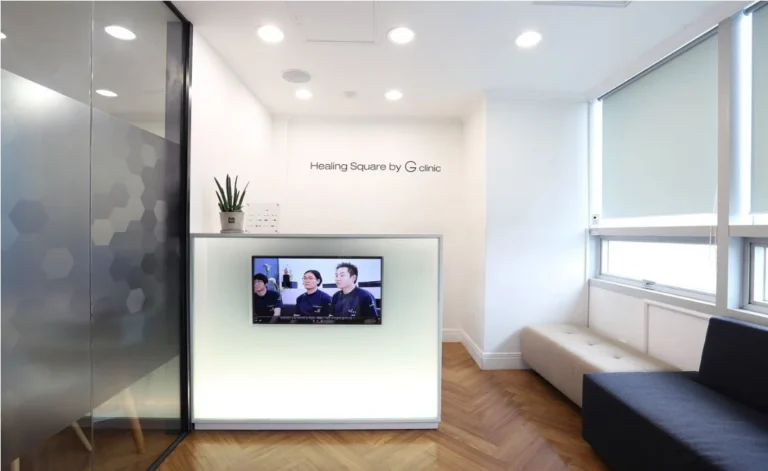A Guide for Informed, Safety-Conscious Patients
Chin implant surgery—also known as genioplasty or chin augmentation—is one of the most popular facial contouring procedures in South Korea. It enhances the chin’s projection and shape, improving facial balance and harmony. Korean plastic surgeons are known for their technical precision, natural aesthetic sense, and use of advanced materials. However, like any surgical procedure, chin augmentation carries risks and potential complications that every patient should understand before making a decision.
This guide breaks down the most important medical considerations and safety tips for international patients undergoing chin implant surgery in Korea.
✅ Common Benefits vs. Potential Risks
Benefits:
- Improved facial profile and balance
- Enhanced jawline definition
- Long-lasting or permanent results
- Minimal visible scarring (intraoral or under the chin)
Risks and Complications to Understand:
Even in the safest Korean clinics, complications can occur. These include both minor side effects and less common but more serious risks.
⚠️ Common Side Effects (Usually Temporary)
| Symptom | Duration | Notes |
|---|---|---|
| Swelling and bruising | 1–2 weeks | Normal and expected after surgery |
| Numbness or tingling | Days to weeks | Usually fades as nerves recover |
| Discomfort or tightness | Up to 1 week | Managed with pain medications |
| Mild asymmetry or tight skin | Temporary | Settles as swelling subsides |
🛑 Less Common Complications
1. Implant Malposition or Shifting
- The implant may move slightly if not secured properly or if healing is disrupted.
- Can result in asymmetry, discomfort, or the need for revision surgery.
2. Infection
- Infection can occur at the surgical site, especially with intraoral (inside the mouth) incisions.
- Requires antibiotics or, in rare cases, implant removal.
3. Nerve Injury
- The mental nerve, located near the chin, can be irritated or injured.
- This may lead to numbness, tingling, or pain in the lower lip or chin area (often temporary, but rarely permanent).
4. Hematoma or Seroma
- Collection of blood or fluid under the skin.
- May require drainage or compression to prevent complications.
5. Scarring (if using external incision)
- External incisions may leave minor visible scars under the chin.
- Korean surgeons often use intraoral incisions to minimize visible scars.
6. Bone Resorption
- Long-term pressure from the implant on the chin bone can cause erosion of the bone, although this is rare.
- Usually managed with proper implant size and positioning.
7. Allergic Reaction or Implant Rejection
- Though uncommon, patients may have a reaction to silicone or other implant materials.
- Rejection may require implant removal or replacement.
🏥 Why These Risks Are Lower in Korea
South Korea is a leading destination for facial plastic surgery for a reason:
- Board-certified facial specialists with years of experience
- Use of medical-grade silicone implants with FDA or KMFDS approval
- Advanced 3D simulation and imaging to plan implant placement
- In-house sterilization systems and operating room standards
- Clinics equipped with emergency response systems and overnight recovery rooms
👨⚕️ Medical Screening Before Surgery
Before your chin implant procedure, your Korean surgeon will assess:
- Overall health and medical history
- Medications (especially blood thinners or supplements)
- Smoking status (which affects healing and infection risk)
- Facial anatomy using 3D imaging or CT scans
Patients with chronic conditions like diabetes or hypertension may be advised to manage or delay surgery until stable.
🔍 How to Minimize Risk as a Patient
- Choose a board-certified plastic surgeon with proven chin augmentation experience
- Avoid smoking, alcohol, and supplements like vitamin E or fish oil 2 weeks before and after surgery
- Follow all post-operative care instructions (mouth rinses, activity restrictions, sleeping position)
- Avoid strenuous movement or jaw pressure in the early healing period
- Use antibiotic mouthwash diligently if you had an intraoral incision
- Attend all follow-up appointments (in person or via telemedicine)
🧳 Considerations for Medical Tourists in Korea
- Stay in Korea for at least 7–10 days after surgery for follow-up care
- Book recovery-friendly accommodations near your clinic
- Consider purchasing medical travel insurance that covers surgical complications
- Prepare a contact plan in case complications occur after you return home
🔁 What Happens if You Need Revision Surgery?
In rare cases, patients may require revision surgery due to:
- Implant displacement
- Dissatisfaction with results
- Complications like infection or asymmetry
Many top Korean clinics offer revision warranties or discounts, especially if the complication occurs within a specific time frame (6–12 months). Be sure to ask about revision policies during your consultation.
✅ Summary: Safety and Risks at a Glance
| Category | Description |
|---|---|
| Typical Side Effects | Swelling, bruising, mild pain, numbness |
| Risks | Infection, implant shift, nerve damage, bone erosion |
| Prevention | Choose expert surgeon, follow post-op care, stop smoking |
| Likelihood | Rare in Korea’s accredited clinics with experienced surgeons |
| Recovery Time | 1–2 weeks for swelling, 3–4 months for full healing |
Final Thoughts
Chin implant surgery in Korea offers safe, natural-looking, and lasting results when performed by the right specialist. While complications are uncommon, being aware of the risks—and how to minimize them—empowers you to make informed, confident choices.



